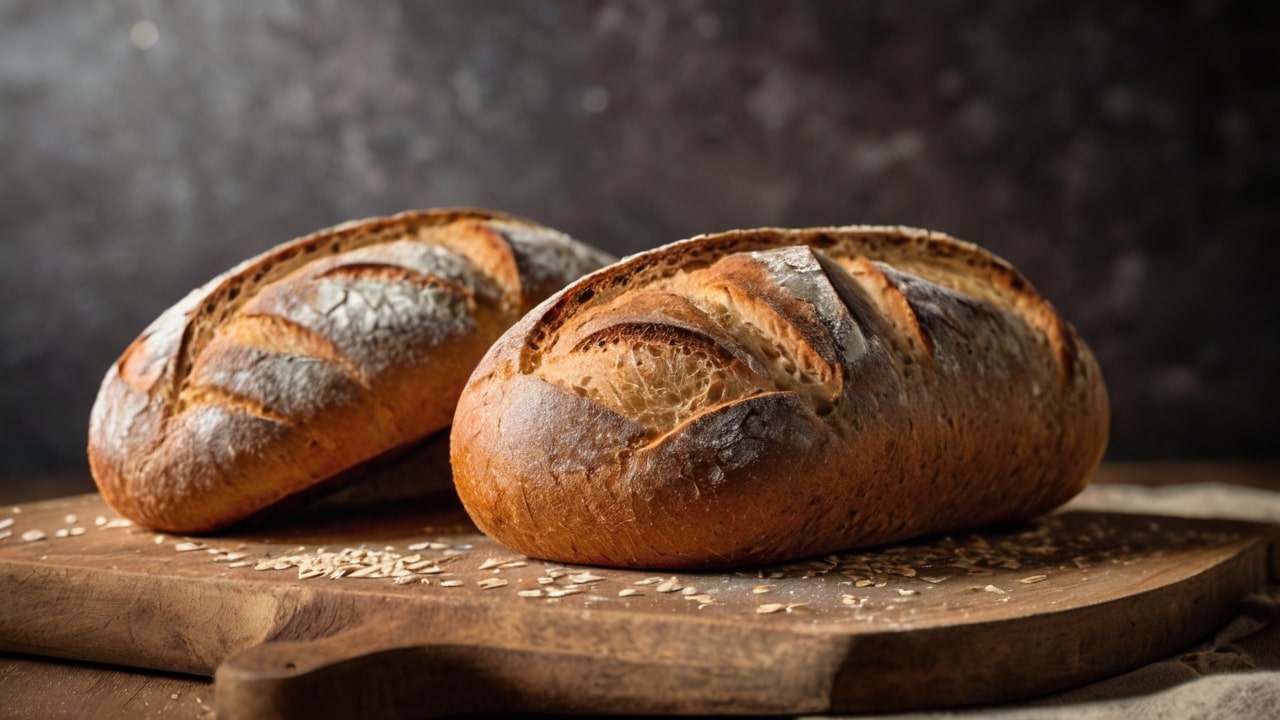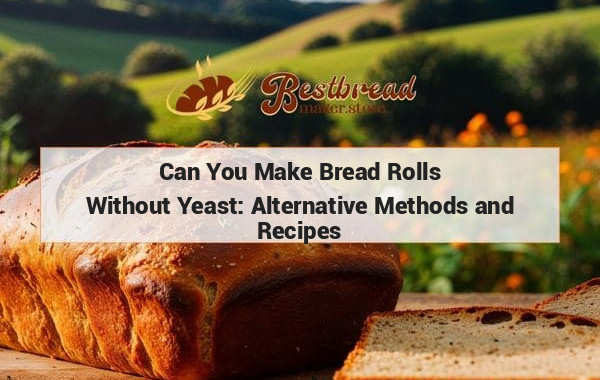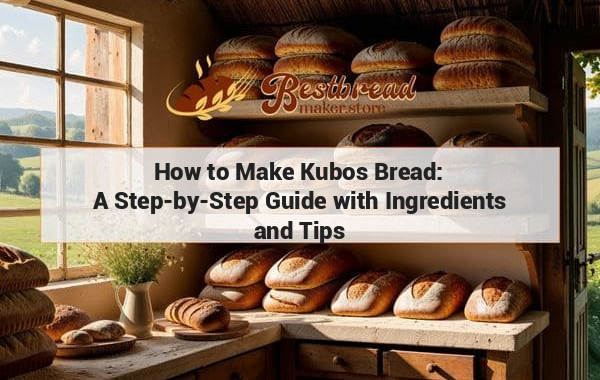Which Bread is Gluten Free? Discover Your Options
Discover which bread is gluten-free and how to choose the best options for your dietary needs. Learn about different varieties, benefits, and tips for making informed choices.
When it comes to choosing the right bread, particularly for those seeking gluten-free options, understanding which types of bread meet this need is essential. Gluten-free bread has become increasingly popular, especially as more people become aware of gluten sensitivities and celiac disease. Selecting the right gluten-free bread is not just about avoiding gluten; it’s also about ensuring that the bread meets your nutritional needs and tastes great. This guide will help you navigate the world of gluten-free bread, explore the best choices, and even discuss how to use a bread maker to create your own delicious gluten-free bread at home.

Understanding Gluten and Gluten-Free Bread
Gluten is a protein found in wheat, barley, and rye. It provides the elasticity that gives bread its chewy texture and helps it rise. For individuals with celiac disease or gluten sensitivity, consuming gluten can lead to severe health problems, including digestive issues, inflammation, and long-term damage to the small intestine. This has led to an increased demand for gluten-free products, especially bread, which is a staple in many diets.
However, gluten-free bread isn't just about removing gluten. It's about finding alternative ingredients that replicate the texture and taste of traditional bread. Common ingredients in gluten-free bread include rice flour, almond flour, tapioca starch, and potato starch. These ingredients provide the necessary structure and texture while keeping the bread free from gluten.
Which Bread Is Gluten Free?

When searching for gluten-free bread, you’ll find that many brands and types cater to different tastes and dietary needs. Some popular types of gluten-free bread include:
1. Rice Flour Bread
Rice flour is a staple in gluten-free baking. It's mild in flavor and works well as a base for bread. Rice flour bread is often soft and has a neutral taste, making it versatile for various uses.
2. Almond Flour Bread
Almond flour is rich in protein and healthy fats, making it a nutritious option. Bread made from almond flour tends to be denser and slightly sweet, which pairs well with both savory and sweet toppings.
3. Sorghum Bread
Sorghum is an ancient grain that is naturally gluten-free. Bread made from sorghum flour is often hearty and has a slightly nutty flavor, making it a good choice for those who enjoy robust bread flavors.
4. Buckwheat Bread
Despite its name, buckwheat is not related to wheat and is naturally gluten-free. Buckwheat bread has a rich, earthy flavor and is packed with nutrients like fiber, magnesium, and manganese.
5. Tapioca Bread
Tapioca flour, derived from cassava root, is often used in gluten-free bread to provide a chewy texture. Tapioca bread is usually light and airy, similar to traditional white bread, making it a popular choice for those who miss the texture of conventional bread.
Why Choosing the Right Bread Matters
Choosing the right gluten-free bread is crucial for maintaining a balanced diet, especially for those with celiac disease or gluten sensitivity. The right bread should not only be free from gluten but also provide essential nutrients. Many gluten-free breads are fortified with vitamins and minerals, as gluten-free diets can sometimes lack these nutrients.
Moreover, taste and texture play significant roles. A good gluten-free bread should not be overly dry or crumbly, which is a common issue with many gluten-free products. The bread should hold up well to spreading, toasting, and other common uses.
Making Gluten-Free Bread at Home

For those who want complete control over their ingredients and prefer freshly baked bread, making gluten-free bread at home is a fantastic option. A bread maker can be your best friend in this endeavor, especially one designed to handle gluten-free recipes.
Choosing a Bread Maker for Gluten-Free Bread
Not all bread makers are created equal, especially when it comes to making gluten-free bread. When selecting a bread maker, consider the following features:
-
Dedicated Gluten-Free Setting: Some bread makers have a dedicated gluten-free setting that adjusts the kneading, rising, and baking times to accommodate gluten-free dough, which behaves differently from wheat-based dough.
-
Customizable Settings: The ability to customize settings is crucial when baking gluten-free bread. This allows you to adjust the kneading time, rising time, and baking temperature to achieve the best results.
-
Non-Stick Pan: Gluten-free dough can be stickier than regular dough, so a non-stick pan is essential to prevent sticking and make cleanup easier.
-
Size and Capacity: Consider the size of the bread maker and the capacity of the loaf pan. If you have a large family or want to make large batches of bread, choose a machine with a larger capacity.
-
Ease of Use: Look for a bread maker that is easy to operate, with clear instructions and user-friendly controls. Some models also come with recipe books specifically for gluten-free bread.
Ingredients for Gluten-Free Bread
When making gluten-free bread, you'll need to use a combination of gluten-free flours and starches to achieve the desired texture. Common ingredients include:
- Rice Flour: Provides structure and is the base for many gluten-free bread recipes.
- Tapioca Starch: Adds chewiness and helps bind the ingredients together.
- Xanthan Gum or Guar Gum: These are essential for providing elasticity and structure to the dough.
- Eggs: Often used to help bind the ingredients and add moisture.
- Oil: Adds moisture and improves the texture of the bread.
Tips for Making the Perfect Gluten-Free Bread
-
Measure Accurately: Gluten-free baking is less forgiving than traditional baking, so precise measurements are crucial.
-
Mix Thoroughly: Ensure that all ingredients are well combined to avoid lumps and uneven texture.
-
Let the Dough Rest: Allow the dough to rest before baking to let the ingredients fully hydrate and activate.
-
Use Warm Ingredients: Using warm water and other ingredients helps the yeast activate, leading to a better rise.
-
Check the Dough Consistency: Gluten-free dough is usually thicker than regular dough but should still be slightly sticky. Adjust the flour or liquid as needed.
Frequently Asked Questions
1. What are the most common ingredients in gluten-free bread?
The most common ingredients include rice flour, tapioca starch, almond flour, sorghum flour, and buckwheat flour. These ingredients replace wheat flour to provide the necessary structure and texture in gluten-free bread.
2. Can I make gluten-free bread without a bread maker?
Yes, you can make gluten-free bread without a bread maker. However, a bread maker simplifies the process and often produces more consistent results, especially for those new to gluten-free baking.
3. Is gluten-free bread healthier than regular bread?
Gluten-free bread is not inherently healthier than regular bread. It depends on the ingredients used. Some gluten-free breads are higher in calories and lower in fiber than whole wheat bread, so it’s essential to read labels and choose options that meet your nutritional needs.
4. Why does gluten-free bread have a different texture?
Gluten provides elasticity and structure in bread. Without gluten, bread can become crumbly or dense. To compensate, gluten-free bread recipes often use gums (like xanthan gum) or eggs to mimic the texture of traditional bread.
5. How should gluten-free bread be stored?
Gluten-free bread tends to dry out faster than regular bread. It’s best stored in the refrigerator or freezer and should be consumed within a few days for optimal freshness.
Conclusion: Enjoying Gluten-Free Bread
Finding the right gluten-free bread can be a journey, but with the right knowledge and tools, you can enjoy delicious, nutritious bread that fits your dietary needs. Whether you choose to buy gluten-free bread or make it at home using a bread maker, the key is to experiment with different types and recipes until you find the perfect match for your taste and texture preferences.
Choosing a high-quality bread maker with customizable settings can make a significant difference in your gluten-free baking experience. With the right machine and ingredients, you can enjoy fresh, homemade gluten-free bread that’s just as satisfying as its gluten-containing counterparts.








